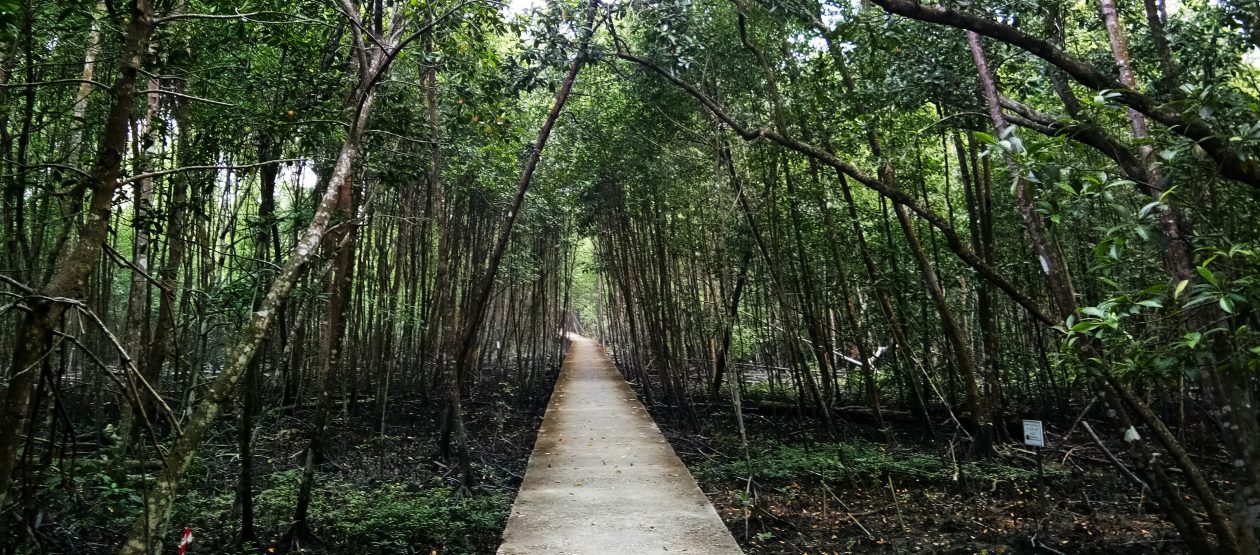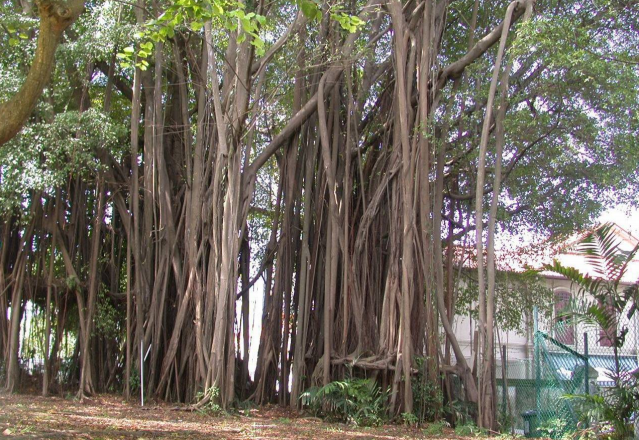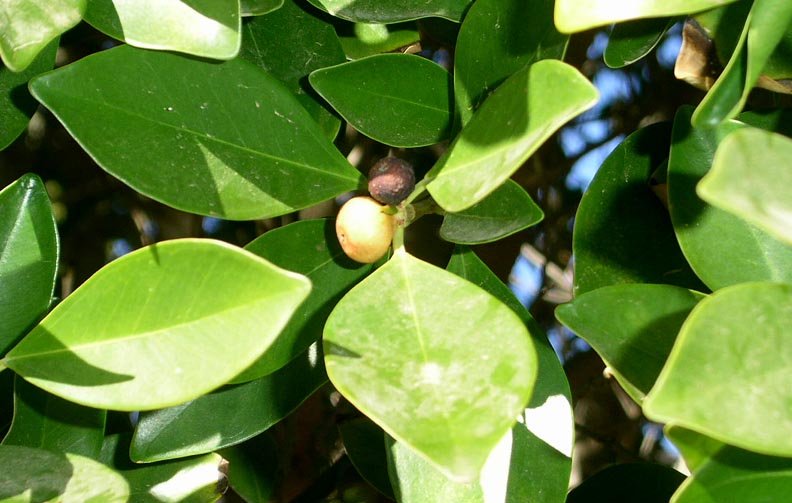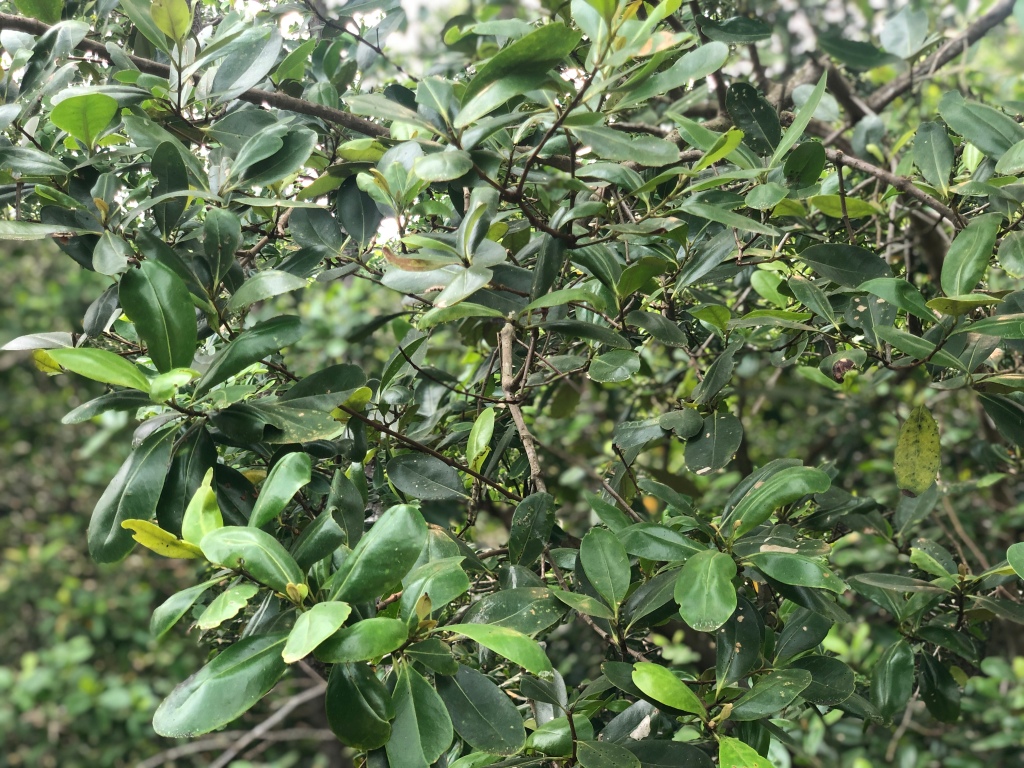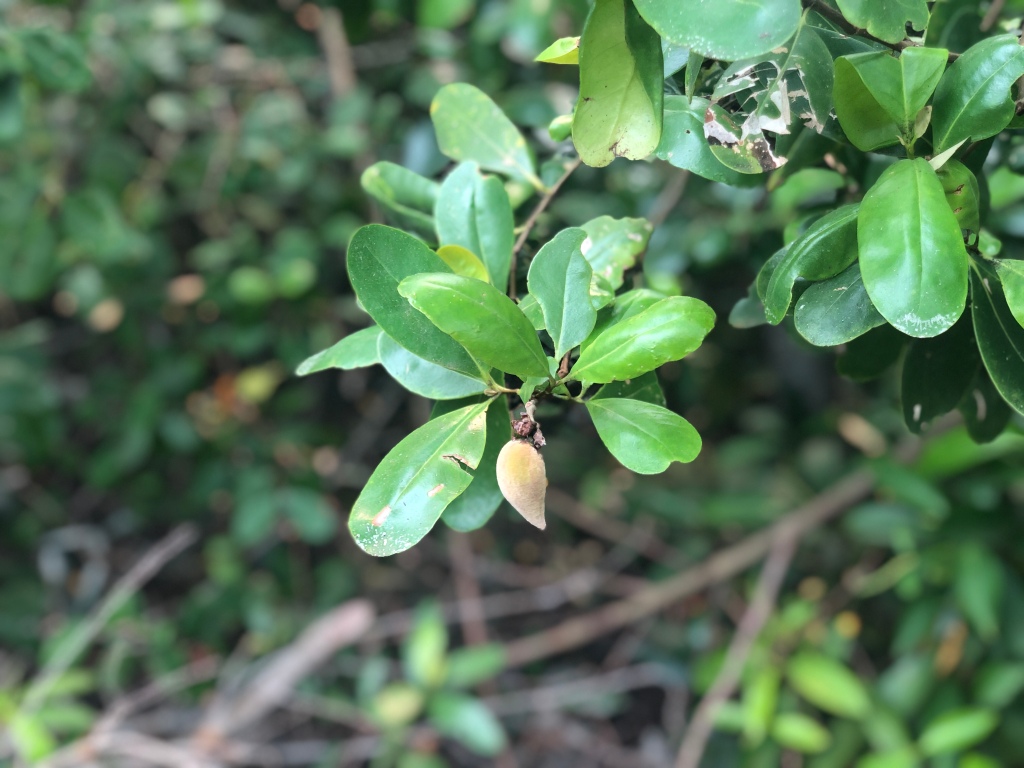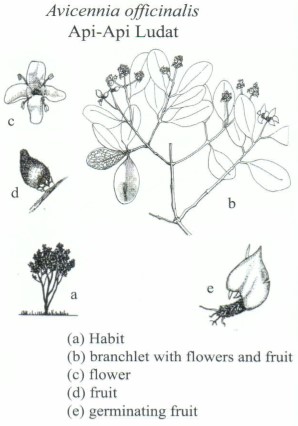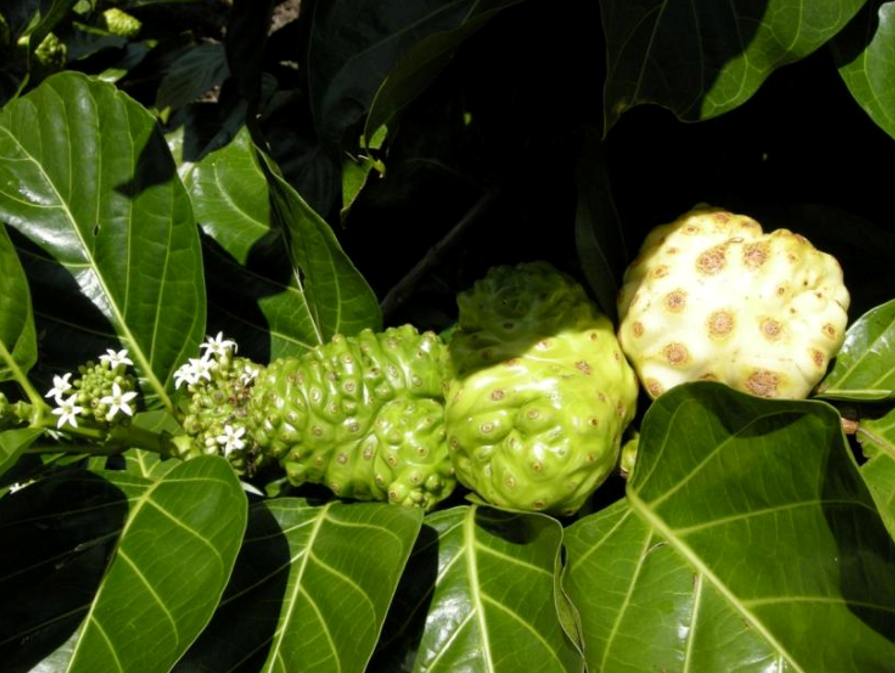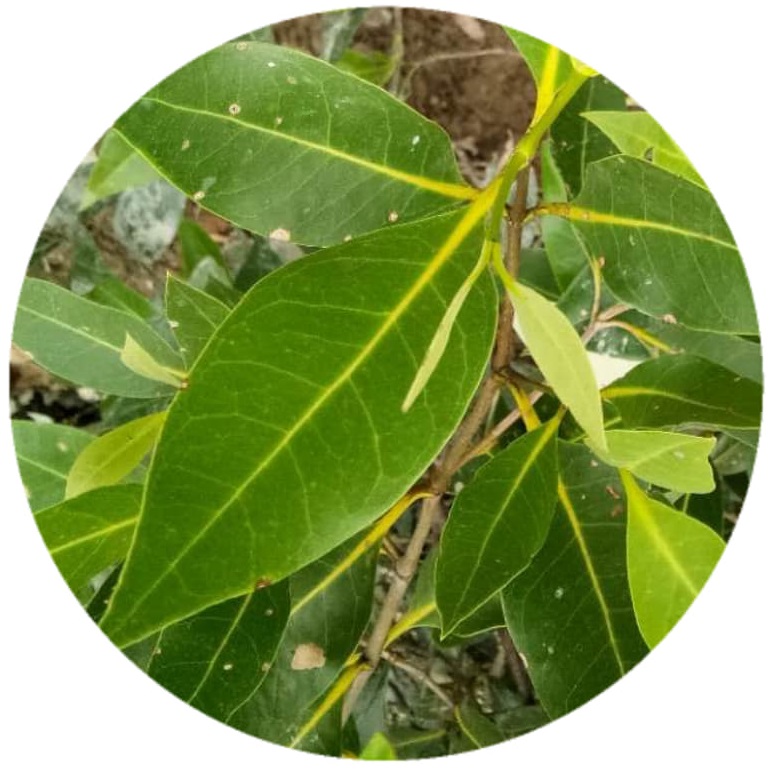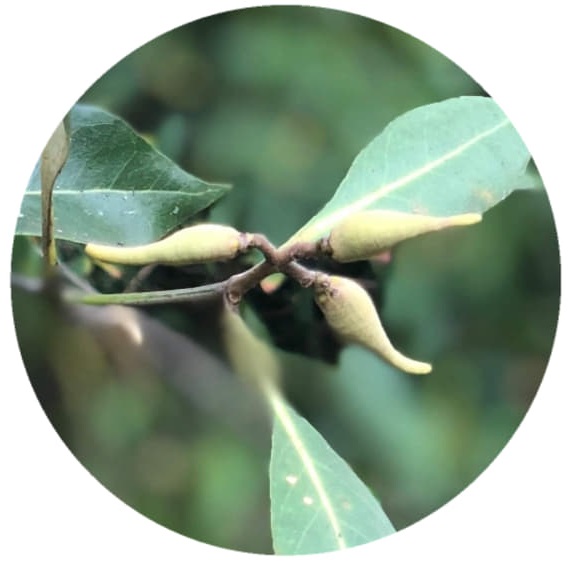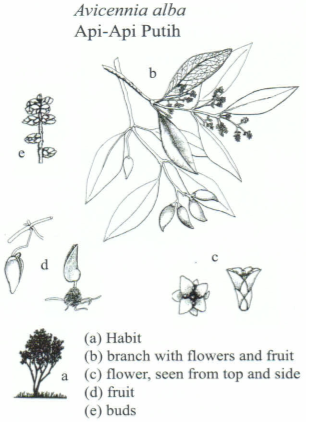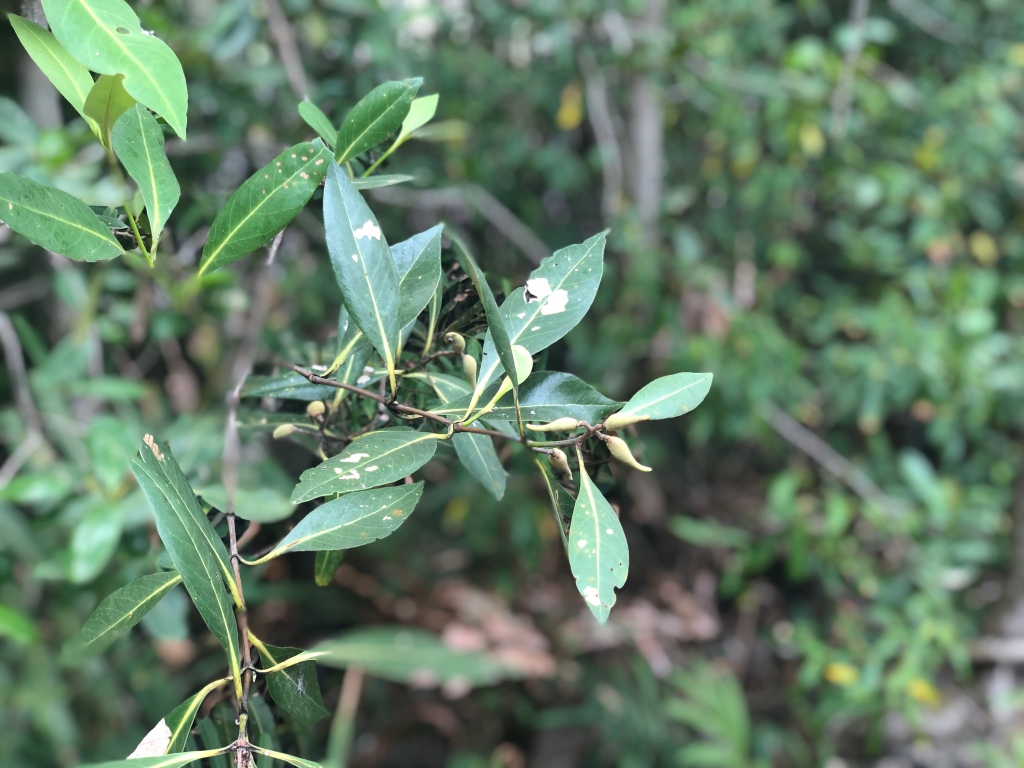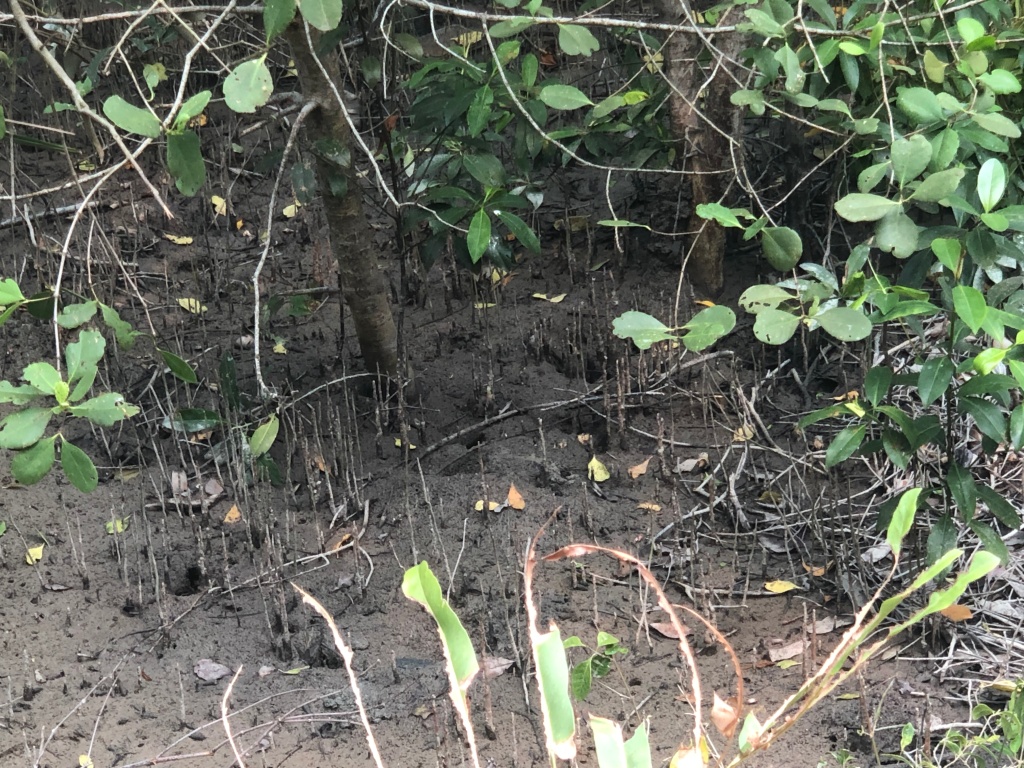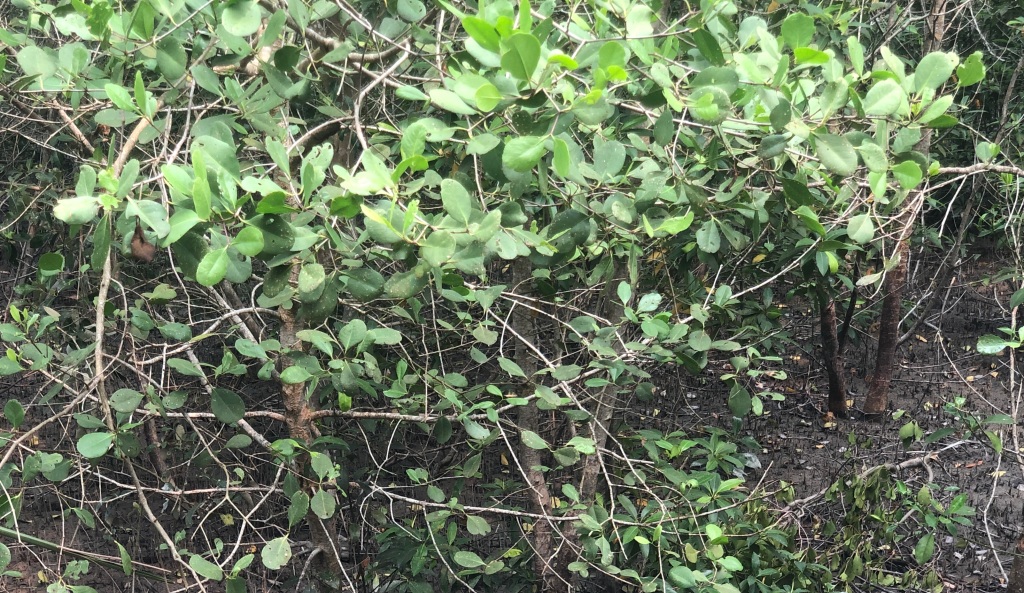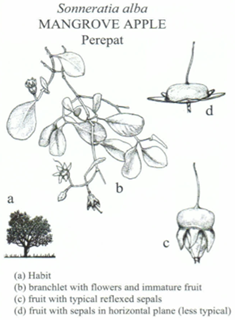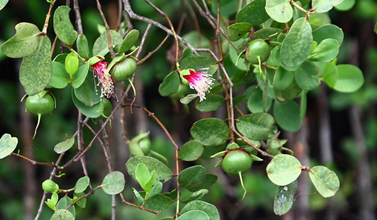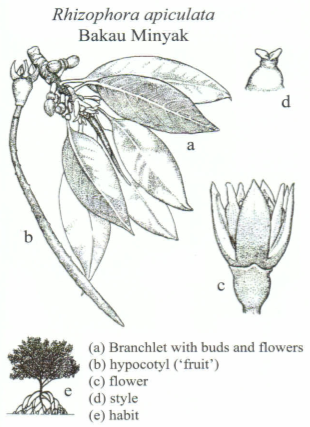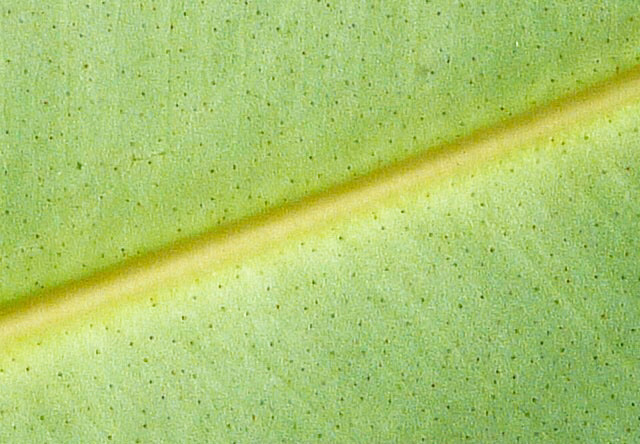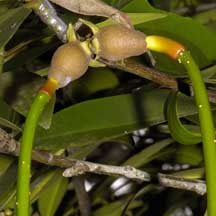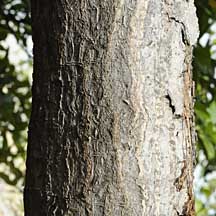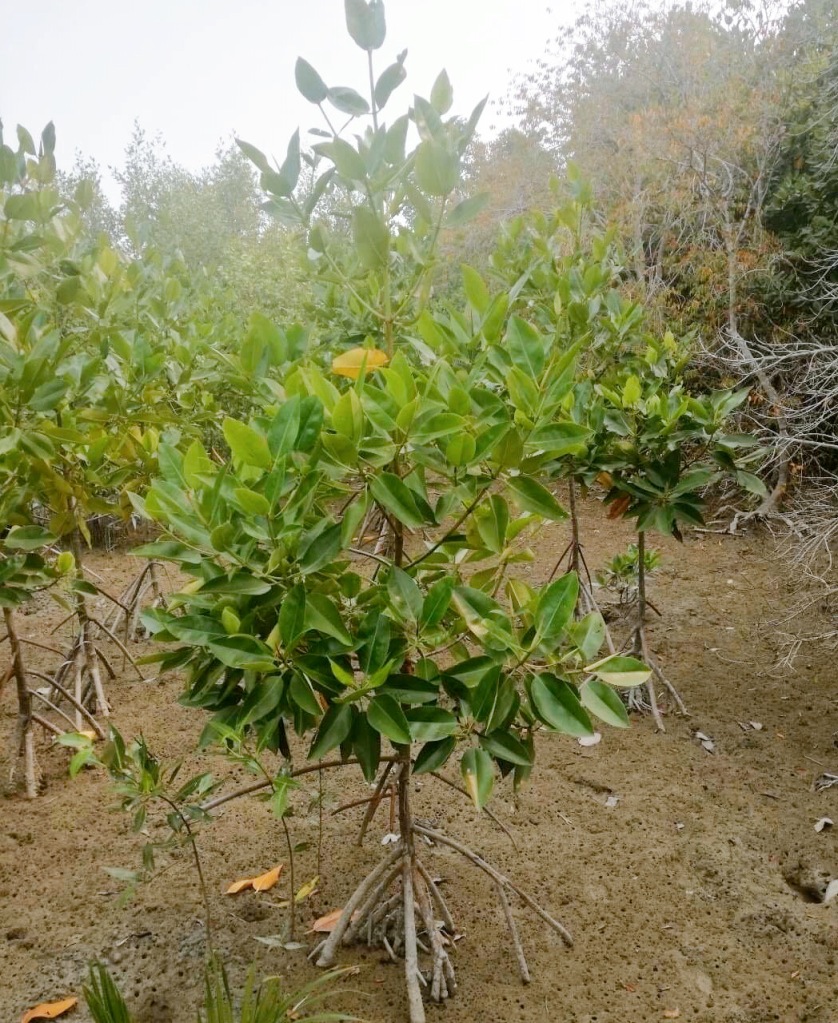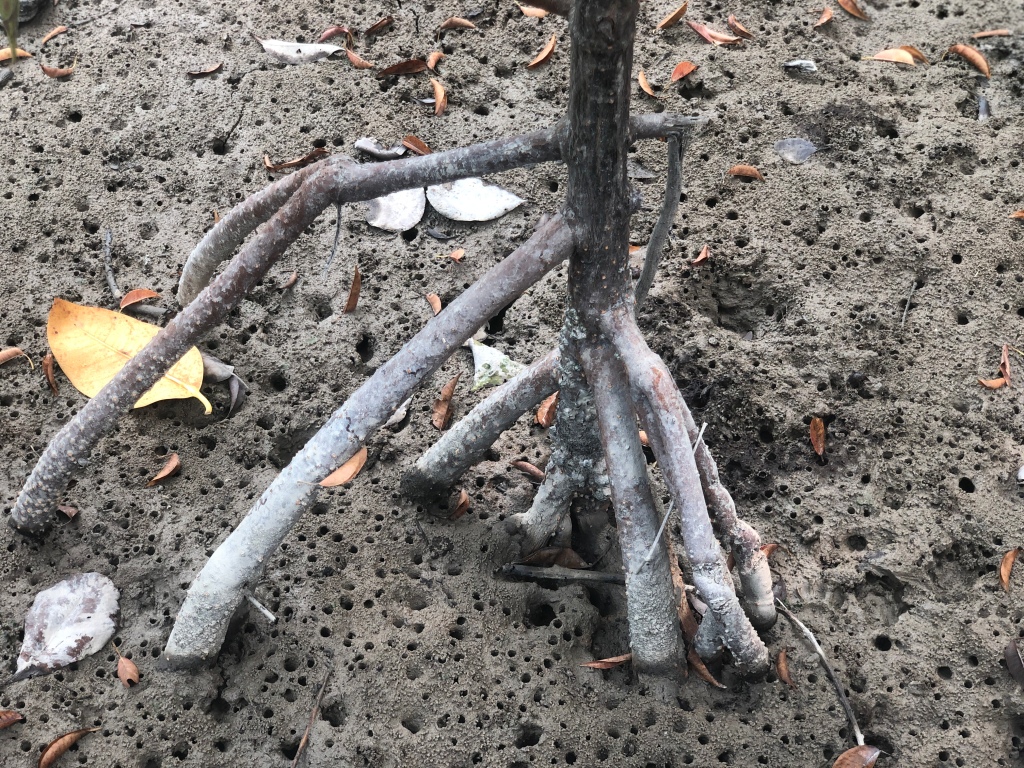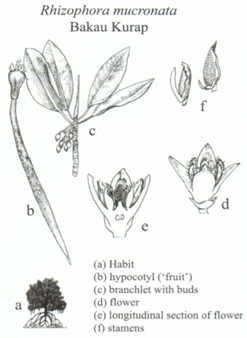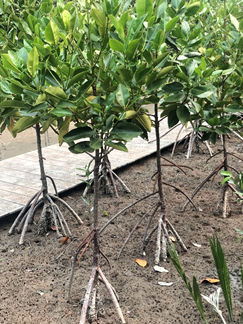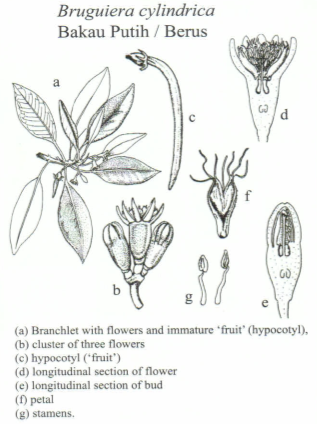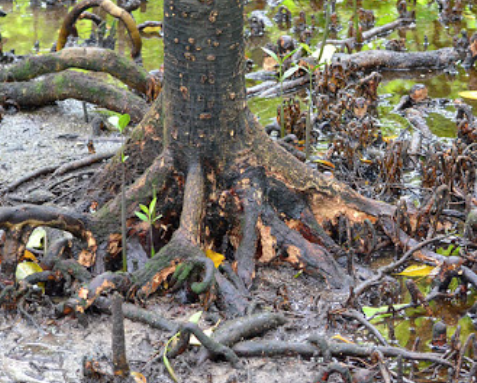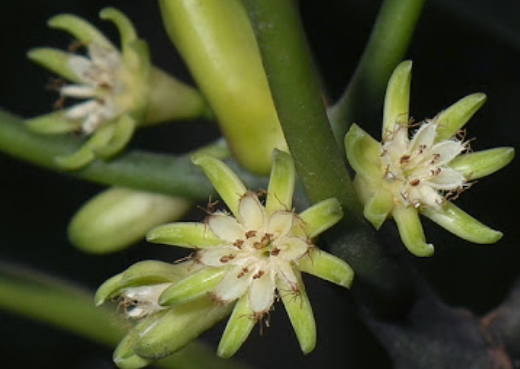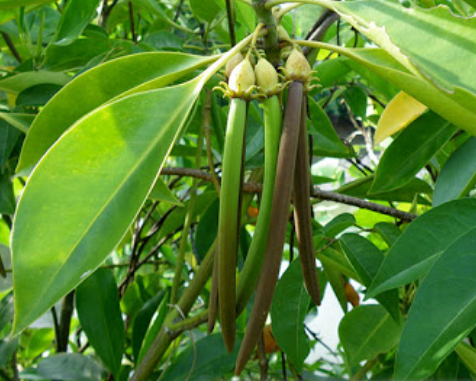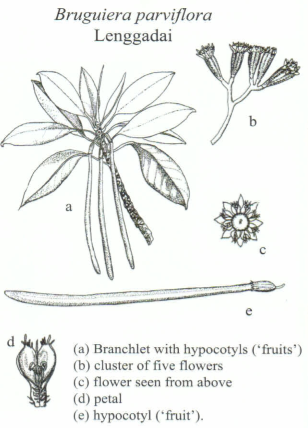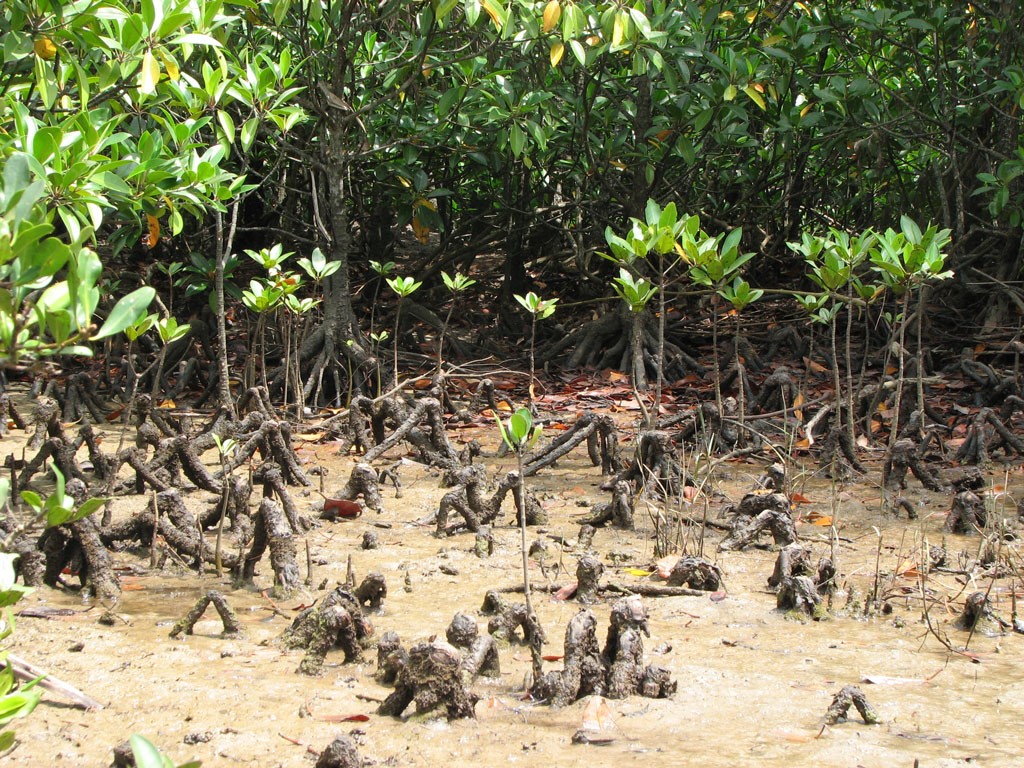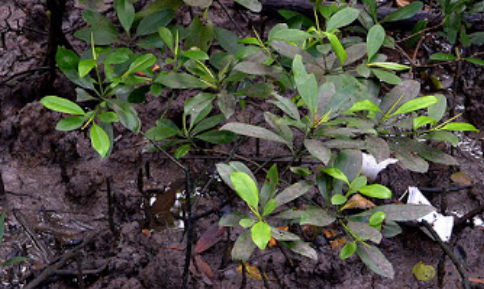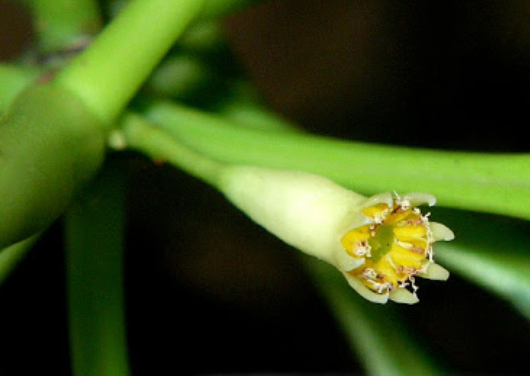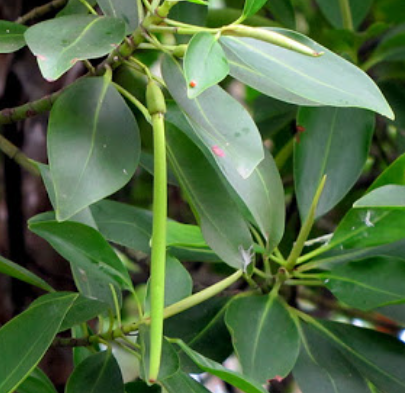CLICK BELOW FOR AUDIO GUIDE
Acrostichum speciosum, the mangrove swamp fern is a widespread plant found in Asia and Australia. A clumping plant to 1.5 metres tall with reddish/brown fertile fronds and pointed leaf tips. It is found as far south as New South Wales.
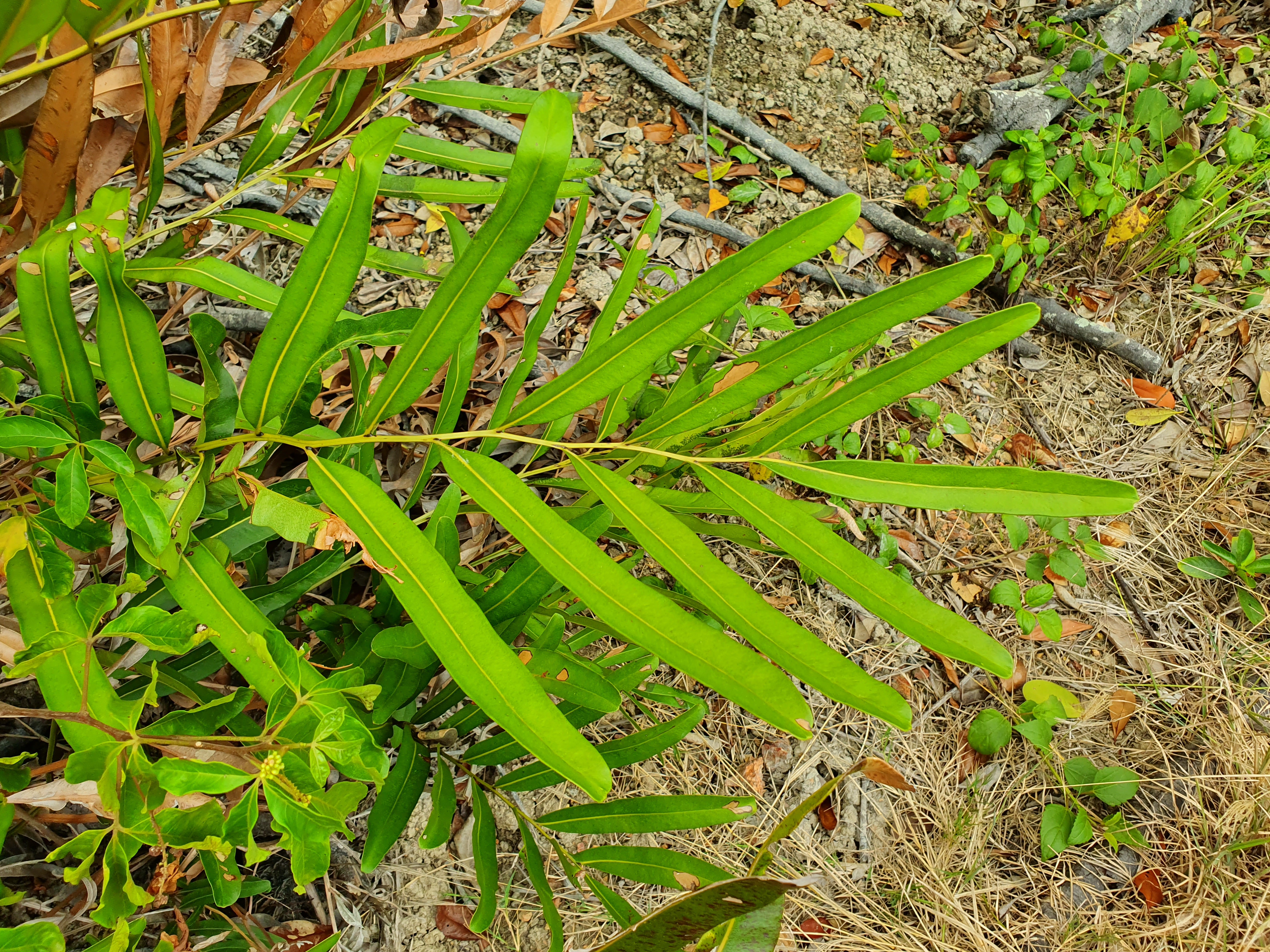
The more delicate and elegant of our mangrove ferns, it is often seen in back mangroves, flourishing on mud lobster mounds and other higher ground, usually in the shade. The leaflets are thin and short (1.5-2m long) and young fronds are green or brownish-green. Rhizomes covered with scales up to 8mm long. The first few pairs near the tips are fertile leaflets, the underside covered below with dark brown spores (sporangia). Sterile leaflets gradually tapering to a narrow tip.
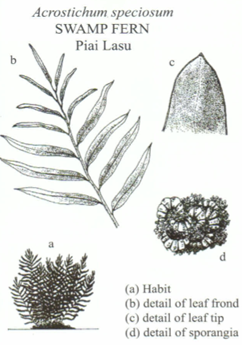
Among the first large low-growing plants to grow on the landward side of the mangrove, the ferns provide shade for other plants and trees to take root. But in cleared mangroves, the ferns can take over so rapidly that they form impenetrable thickets which prevent other plants from taking root. Thus it is often considered a weed. For animals, these thickets provide safety and shelter. And for birds, a safe place to nest.

The young leaves are eaten in Borneo, the Celebes and Timor. Medical uses including placing pounded or grated rhizomes as a paste on wounds and boils in Malaya and Borneo. In some parts of our region, the leaves are dried and used as thatching which is considered superior because they last longer. And should they catch fire, they burn so quickly into ash that the fire is not sustained to endanger any other parts of the home.
